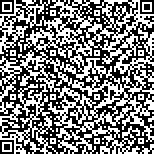下载中心
优秀审稿专家
优秀论文
相关链接
摘要

针对Mask匀光法对低通滤波器及其尺寸参数依赖的问题,提出一种变分Mask自适应匀光算法。根据影像自身的先验信息,结合Mask数学模型构造变分能量函数,分别利用各向异性和各向同性全变分正则项约束理想影像和背景影像,采用分裂Bregman方法交替迭代求解,可同时获取最优化背景影像和理想影像。利用3幅光照不均匀的遥感影像进行实验并与3种不同滤波尺寸的Mask匀光法进行了比较,本文方法在目视效果和定量评价指标上均呈现明显的优势,在消除亮度不均的同时能够保持影像的纹理和细节信息。
The illumination of a captured remote sensing image may be unevenly distributed because of the influences of sensors and external factors, such as light and fog. Uneven illumination degrades the quality of an image and causes interference in the subsequent processing (e.g., image interpretation, image classification, and image mosaicking). The process of correcting uneven illumination is called image dodging, which is of great practical significance and application value.
Current methods focus on how to obtain the illumination distribution within an image and compensate for the different parts of the image in different degrees. The mask dodging method is widely used for remote sensing images. The background is generated by a low-pass filter to simulate the illumination distribution and subtracted from the original image to obtain the ideal image with even illumination. Estimation of the background image is a key step in the mask dodging method and directly affects the resulting image, which depends on the low-pass filter and its dimension parameter. Automatic selection of the dimension parameter is a problem in the mask dodging method. However, no suitable solution to the problem exists, and manual adjustment is usually required in practical applications.
An adaptive dodging method based on a variational mask is proposed in this study to resolve the poor universality of the mask dodging method. A variational energy function is constructed according to the prior information of the image itself and the mathematical model of the mask dodging method. L1 and L2 norms are adopted to constrain the texture and detail of the ideal image and the smoothness of the background image, respectively. Estimation of the background image is transformed into an optimal solution of the variational energy function. Solving the problem directly is often difficult because the variational function contains two norms. The split Bregman method is used to decompose the variational function into three subproblems, which are solved by alternate iteration, to simplify the calculation. Optimal background and ideal images are then obtained simultaneously.
Two groups of experiments are conducted on three remote sensing images to verify the effectiveness of the proposed method. Compared with mask dodging methods with three different dimension parameters, the proposed method performs better in visual evaluation and quantitative measurements. The proposed method can effectively eliminate uneven illumination while maintaining the textures and details of the remote sensing images.

